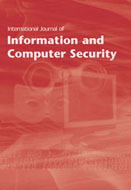Sample Response Statement
RESPONSES TO REVIEWER COMMENTS
FOR ROUND-? REVIEW
PAPER ID: ___________
PAPER TITLE: ___________________________________________________________
FOR REVIEWER #1:
COMMENT #1: "The case itself reads rather like a Masters project. There is little in it...."
RESPONSE: This case is not a Master thesis, it is a consulting project. We have never seen a planning framework like ours in the literature. We believe that with your constructive comments and our revisions, it has significant contribution to the existing literature.
ACTION: None.
COMMENT #2: "I have a question about your percentages for the different sizes of computers. Wouldn't you expect a firm using a mainframe to also have (perhaps) some minis and (certainly) some PCs. Your percentages do not reflect such a situation. The hardware statistics would be more meaningful if they pertained to the primary computer that each firm uses."
RESPONSE: We apologize for the confusion. The percentages refer to the proportion of usage of different sizes of hardware in an average company.
ACTION: We have changed the following text in the paper.
FROM:
"The types of computer used for MKISs included mainframe computers (44%), personal computers (25.1%), minicomputers (22.4%), and multi-user microcomputers (8.5%)."
TO:
"On average, 44% of the hardware used in a company's MKIS are mainframe computers, 25.1% are personal computers, 22.4% are minicomputers, and 8.5% are multi-user microcomputers."
COMMENT #3: "At times, the language is either vague or contains jargon that obfuscates the intended meaning. Section 4.4 is an example. It should be revised to clarify the points the authors are trying to make."
RESPONSE: Thank you very much for this suggestion. We have improved the clarity of Section 4.4.
ACTIONS: We have added more explanations and two new references at the first paragraph of Section 4.4 on pp. 10-11. Please refer to the newly added text which is underlined.
"Figure 3 shows the path loadings between constructs, the standardized loadings of scale items within two reflective constructs (IT capability and Innovativeness), and the weights of scale items within one formative construct (Information synergy). The reflective variables (also called effect indicators) are reflected by the latent variables and should be highly correlated with each other. The formative variables (called cause indicators) could determine the latent variables and should not be correlated (Chin, 1998b; Blalock, 1964)."
Newly adding text at the second paragraph of Section 4.4:
"Therefore, our proposed model is a fully mediated model. The finding indicates that information synergy is an essential mediator; IT capability would not have a significant effect on innovativeness without information synergy. The results of three possible models are shown in Table 6."
We also added two new reference as follows:
- Blalock, H. M. (1964). Causal inferences in nonexperimental research. Chapel Hill, NC: University of North Carolina Press.
- Chin, W. W. (1998b). Issues and opinion on structural equation modeling. MIS Quarterly, 22(1), 7-16.





 International
Journal
of
International
Journal
of 
 International
Journal
of
International
Journal
of